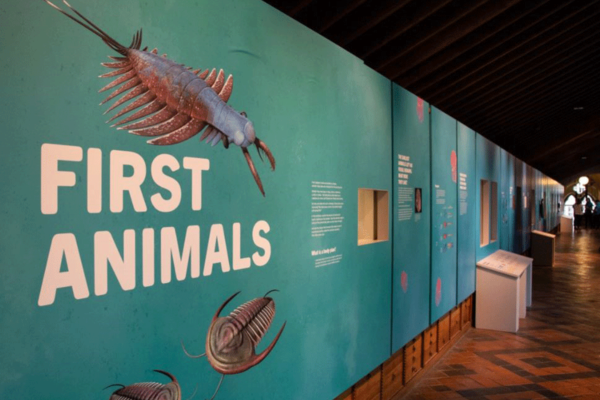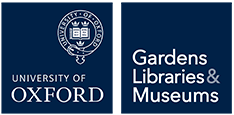First Animals
About the project

The visitor journey began by travelling back in time 600 million years, to when the very origins of all animals – including humans – began to develop in the world’s oceans.
In an extraordinary evolutionary event, which has never been repeated since, the Earth then experienced a huge increase in new life forms, many of which laid the foundations for the body plans of all subsequent animal life. This occurrence, termed the Cambrian Explosion, took place over a period of just 20 million years – a mere blink of the eye in geological terms. The ‘First Animals’ exhibition revealed how amazing fossil evidence from this epoch is being uncovered and investigated to shed new light on our earliest beginnings.
Press and visitor feedback was overwhelmingly positive:
“For a glimpse of life right at the start of the age of animals, you can’t ask for anything better than this”
New Scientist
“I live in the USA [and] came for this exhibit”
Visitor comment
“Thank you so much for making these wonderful talks available to the public, @morethanadodo. The strange summer of 2020 was so much better with this series”
Social media comment
Outcomes and impacts
Exhibition: First Animals, July 2019 - March 2020, Oxford University Museum of Natural History.
Online talks: First Animals YouTube playlist
- ‘First Animals’ had wider reach than any previous science exhibition at OUMNH, with 219,562 visitors and 5,123 engagements through onsite events;
- ‘First Animals’ was also very popular on social media; a Facebook post on the Cambrian seafloor had approximately 64,000 views;
- The exhibition had a strong impact on public understanding of research on animal origins: over 80% of 13,000 surveyed visitors reported they had learned something new;
- OUMNH engaged a total of 382 school students and 141 university students through formal sessions, with teachers and lecturers;
- The exhibition facilitated collaborations with local artists from the Oxford Printmakers Co-operative, resulting in the creation of original artworks;
- The research underpinning First Animals was the stimulus for a major new partnership between OUMNH and Yunnan University in China, which enabled the loan of 55 Chinese fossils that were integral to the exhibition.
The project was submitted as an impact case study to REF 2021; the full impact case study can be downloaded from the REF 2021 impact case study database.
Project Team
Dr Duncan Murdock, Oxford University Museum of Natural History
Dr Imran Rahman, Oxford University Museum of Natural History
Dr Frankie Dunn, Oxford University Museum of Natural History
Prof Derek Siveter, Oxford University Museum of Natural History
Dr Jack Matthews, Oxford University Museum of Natural History
Dr Lauren Sumner-Rooney, Oxford University Museum of Natural History
Dr Sammy De Grave, Oxford University Museum of Natural History
Prof Paul Smith, Oxford University Museum of Natural History
Dr Ross Anderson, University of Oxford
Prof Peter Holland, University of Oxford
Prof Seb Shimeld, University of Oxford
Dr John Cunningham, University of Bristol
Prof. Philip Donoghue, University of Bristol
Dr Xiaoya Ma, Yunnan University
Dr Martin Smith, Durham University
Dr Jakob Vinther, University of Bristol




